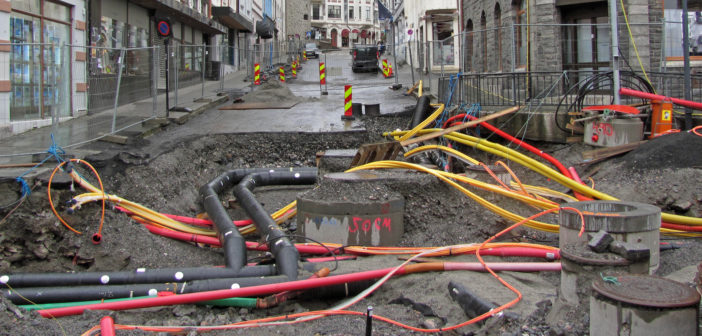Attitudes around the world are changing when it comes to protecting buried services. This is most noticeable when we look at the terminology people are using. Most markedly, there has been a shift from talking about underground utilities to talking about underground assets. When companies and regional governments change names to money-related terms attitudes transform. Money also drives awareness and legislation. People sit up and listen when their assets are threatened.
How do we protect assets from damage? The answer to that lies in:
- Adequate government support
- A global approach from the contractor
- Building awareness
- Better equipment
- Increasing user skill.
Let’s look at these in detail.
Government support
When trying to change minds or introduce a new concept to a new area, we tend to need a nudge in the right direction either with legislation, regulation or guidance from our governments. Countries where this has been very successful are Germany, the UK and the USA. These three countries have some form of government support for protecting buried assets, either through encouraging the purchase of the necessary equipment, formal guidance on what should be done before breaking ground or dedicated services to help with identifying potential utilities near where you dig.

A global approach
Some larger companies in developing countries try to take the same approach to breaking ground as they do in the United Kingdom and Europe, setting standards for local contractors to follow. By doing this they:
- Introduce safe working practices
- Train local contractors in equipment use
- Implement methods of safe working
- Build awareness of the dangers involved in excavation work
Leading by example drives governments to develop and improve legislation for their countries.
Building awareness
We need to build awareness not only of what lies underground but also of the consequences of not knowing what is beneath your excavator bucket or shovel. A utility strike is not only costly in terms of damaged equipment, damaged utilities and service interruption but it can also damage lives and potentially end them.
This means that scanning before digging needs to become a standard practice wherever there are buried cables.
Better equipment
Since the introduction of the automatic DigiCAT locators in the early 2000s. Leica Geosystems has been one of the big innovators in utility detection, simplifying workflows and increasing capabilities to analyse assets performance in less time.
The launch of the new DD SMART utility locator solution allows users to map buried utilities, transfer and access data remotely to a hosted service for multiple users, across multiple sites to manage site activities. The Leica DD SMART utility locator series uses industry-leading digital signal processing to identify underground assets deeper, faster and more accurately than any other system.

Increasing user skill
This is the number one key area for asset protection. The best laws, equipment and risk awareness will not help someone who does not know how to use the equipment. Leica Geosystems offers several courses ranging from a half-day user training to a five-day utility surveyor course.
With automatic pinpointing, onboard video tutorials, usage alerts, and audio and visual displays in DD SMART utility locators, Leica Geosystems simplifies utility location. Nonetheless, without formal training in the use of the equipment and cable locating, assets and people are still in danger.
Knowing how to use the equipment properly and applying knowledge to an excavating environment, is most important for finding and identifying assets correctly, and therefore, stay safe during excavation.
Register for one of our training sessions online by clicking here.














